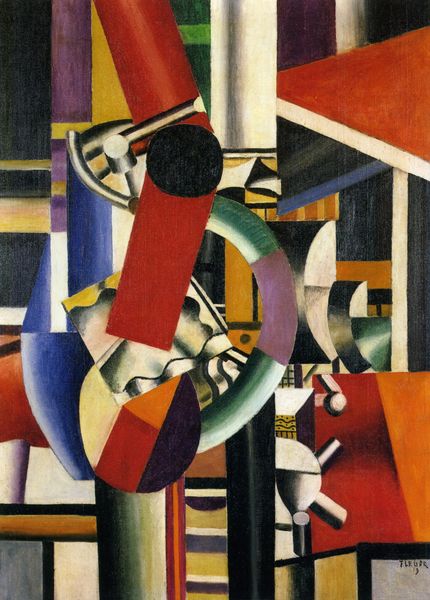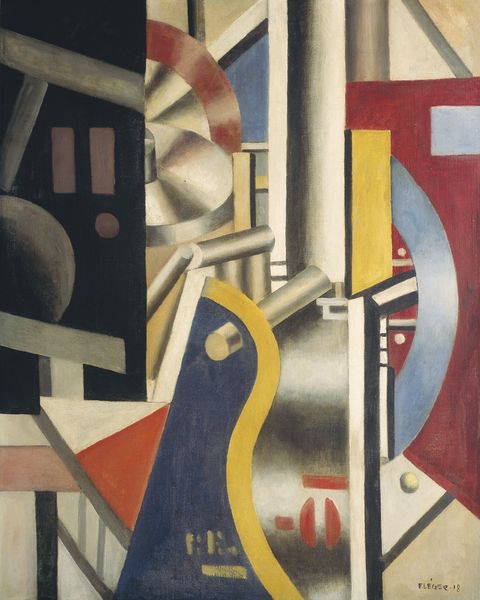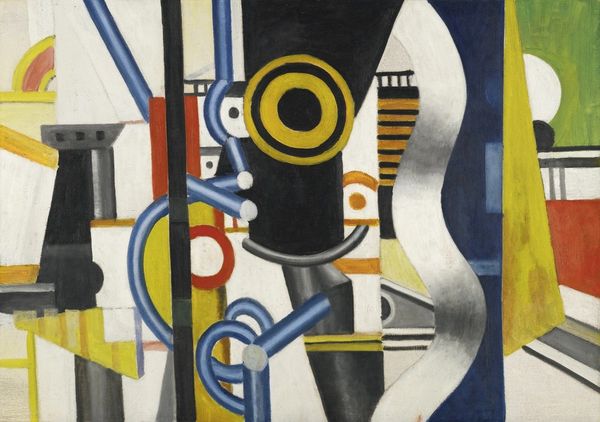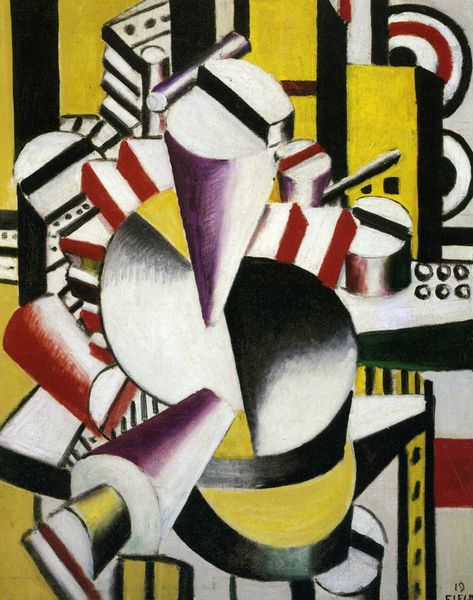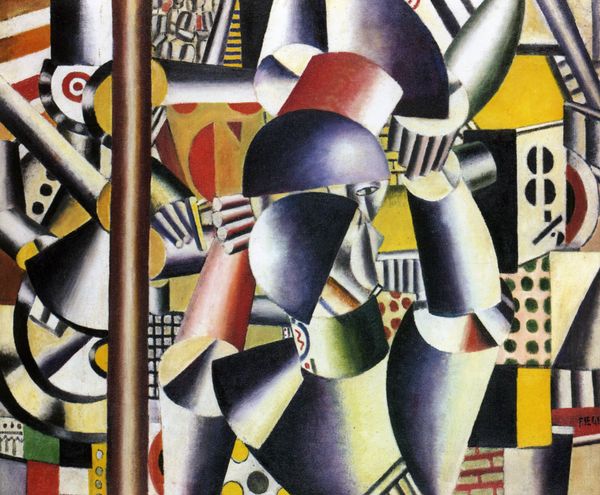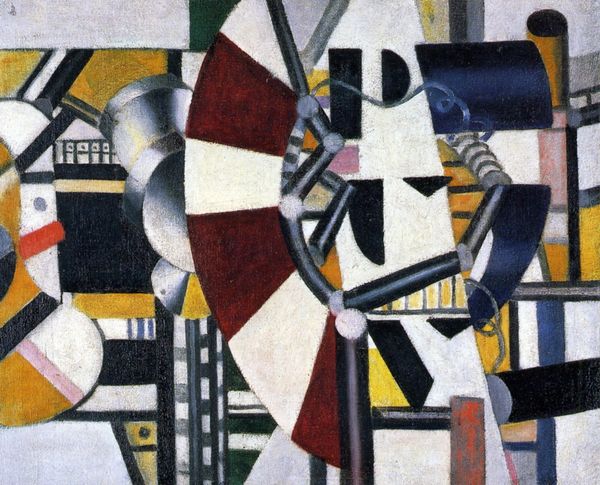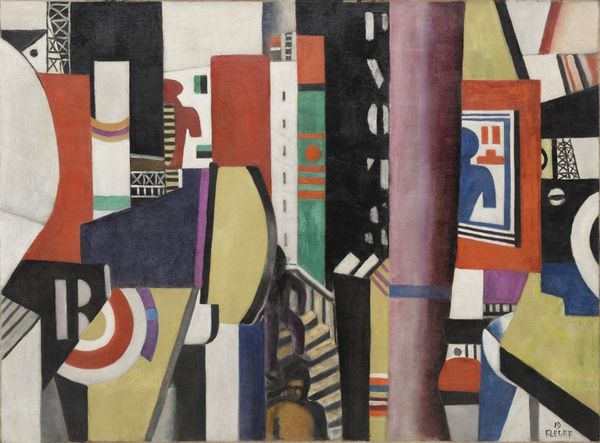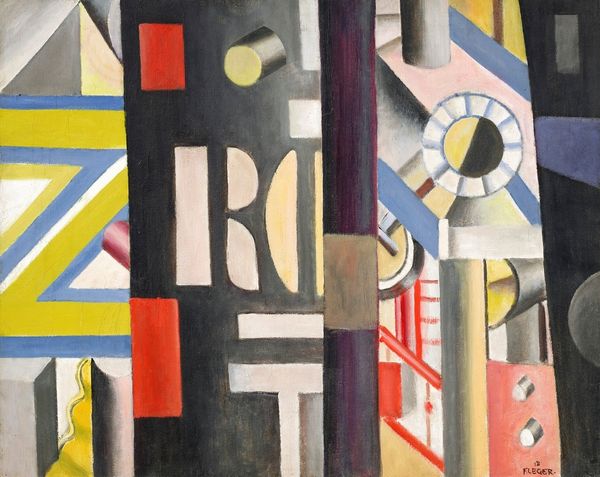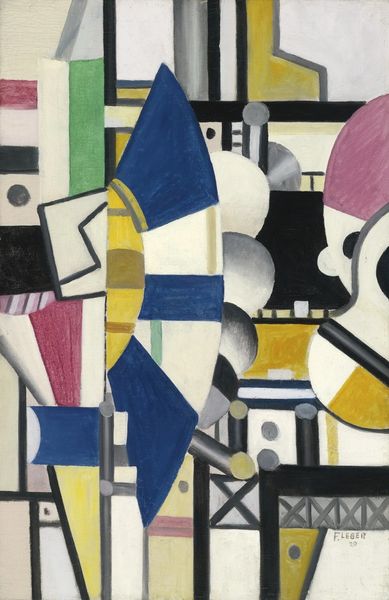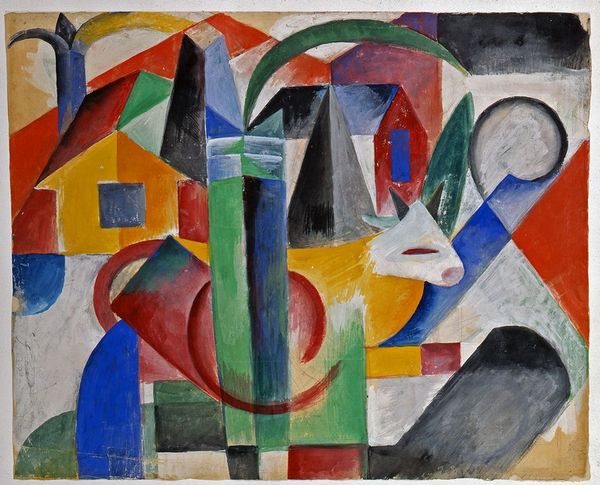
painting, oil-paint
#
cubism
#
painting
#
oil-paint
#
geometric
#
expressionism
#
abstraction
#
modernism
Copyright: Modern Artists: Artvee
Curator: What a fascinating visual feast. This is Fernand Léger's "Propellers," an oil on canvas he created in 1918. It's a potent example of his shift into a more mechanical, almost militaristic aesthetic. Editor: My initial impression is controlled chaos. A riot of forms fighting for attention, yet somehow held in check by that restricted color palette. Curator: Léger was deeply affected by his experiences during World War I, serving in the French army. That industrial, mechanized warfare, with its new technologies, made a huge impact on his art. It’s a far cry from earlier artistic interests and represents, historically, an increasing societal turn toward glorification of machinery. Editor: Absolutely. I see a visual language built of cogs and pistons. Look at those segmented cylinders, the arcs and angles—they’re clearly referencing mechanical forms. What is interesting is the implied motion, even with its static forms. Curator: Right, and that use of form speaks to his embrace of Cubism. He was after breaking down reality into these component parts and reconstructing them in a new visual order, but also exploring dynamism and fragmentation in relation to conflict. It’s about conveying the energy and fragmentation of modern life. Editor: And the symbols transcend mere mechanical representation, though. Those segmented forms also evoke the visual language of rebuilding, of broken-down objects in the act of repair and innovation. Perhaps a statement about recovery after destruction? Curator: Potentially. "Propellers" appears during a time when industry played an important role in rebuilding European nations. Editor: Well, whatever else it is, it certainly captures something elemental about the Machine Age: optimism mixed with a little dread. Léger manages to freeze a sense of forward movement even as he gives us something stark, imposing, and still. Curator: I agree, a powerful collision of historical experience and artistic exploration of both dynamism and destruction. It speaks to art's crucial role in translating profound shifts within social structures.
Comments
No comments
Be the first to comment and join the conversation on the ultimate creative platform.



